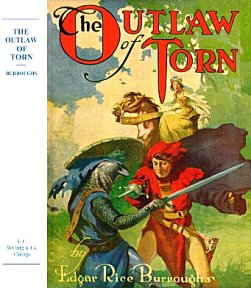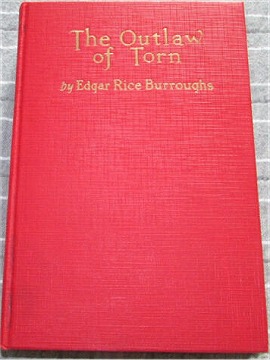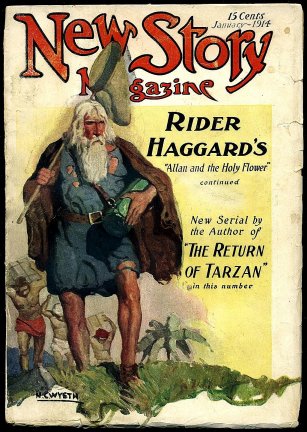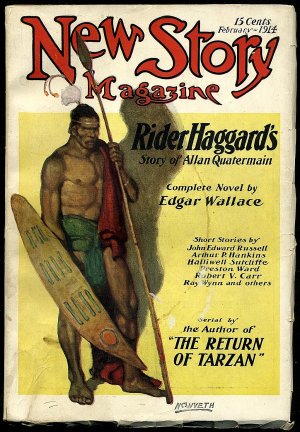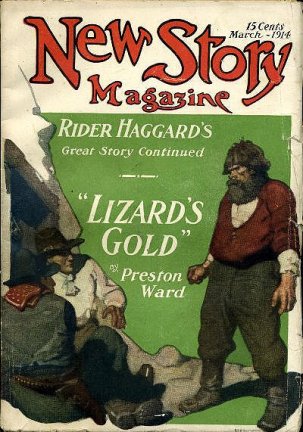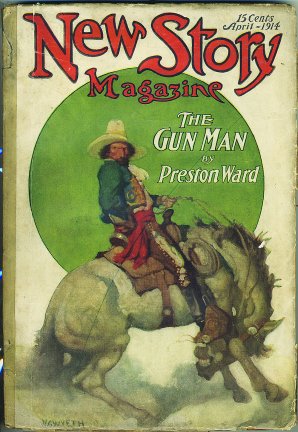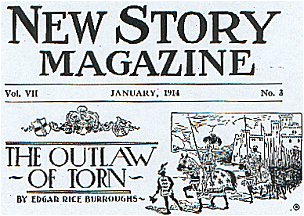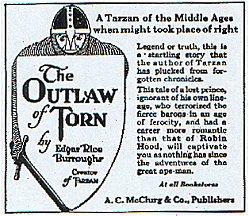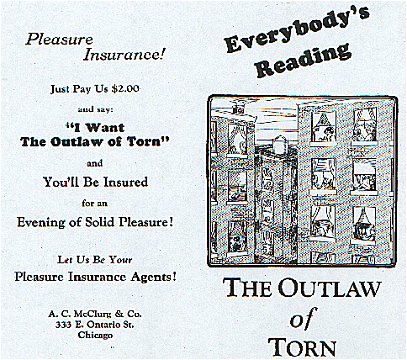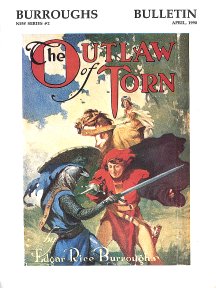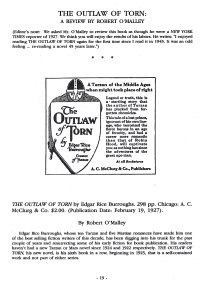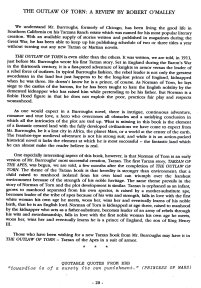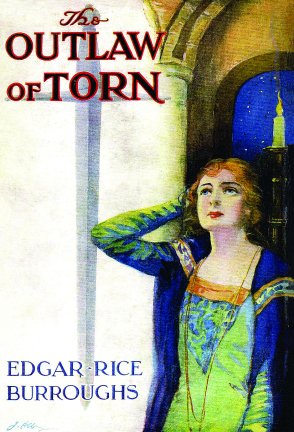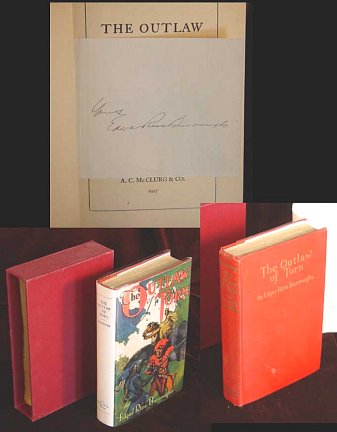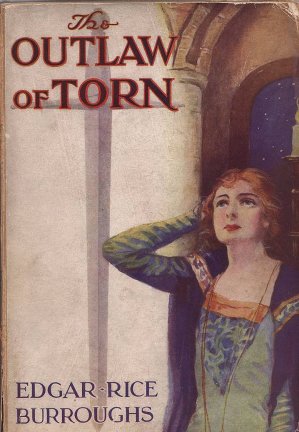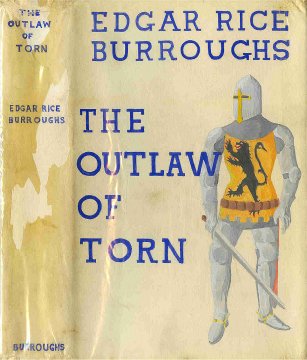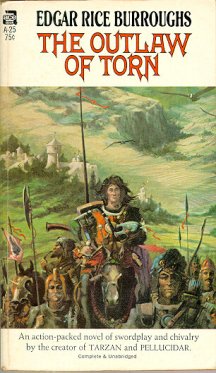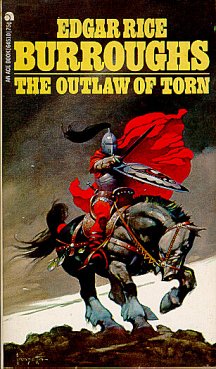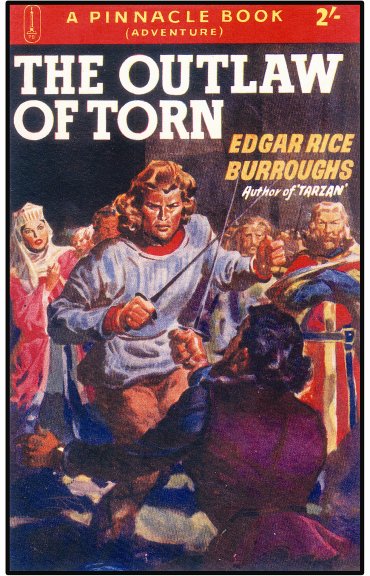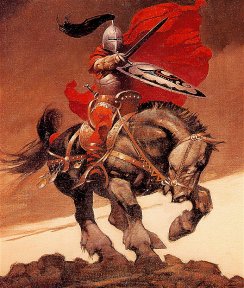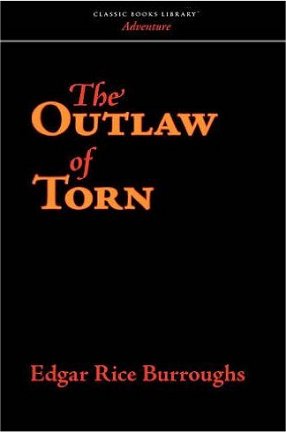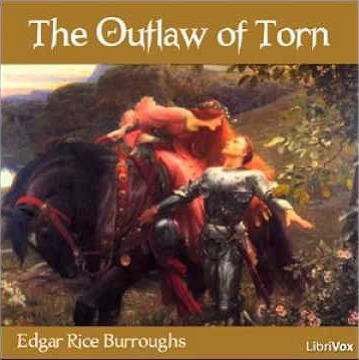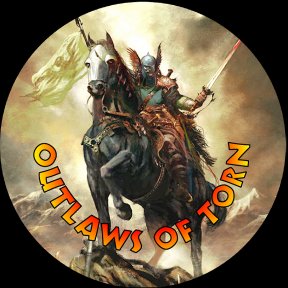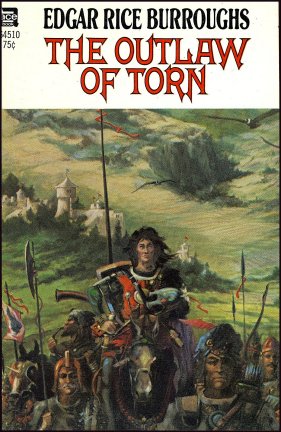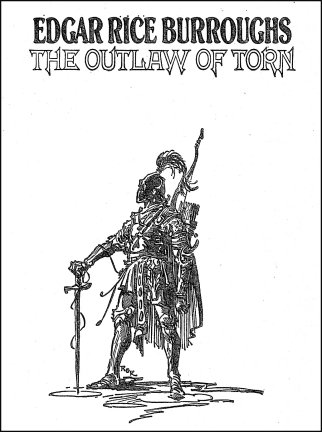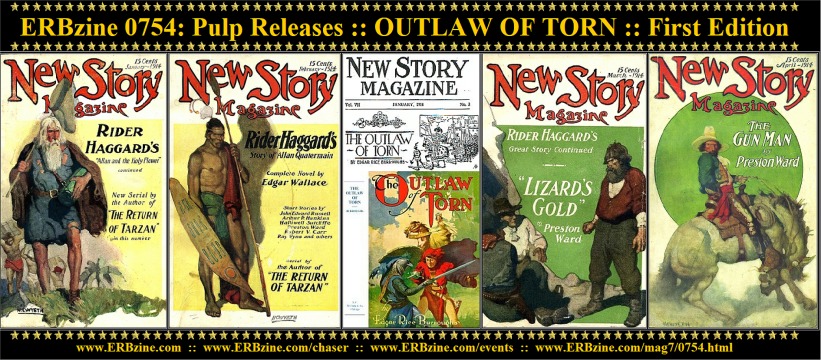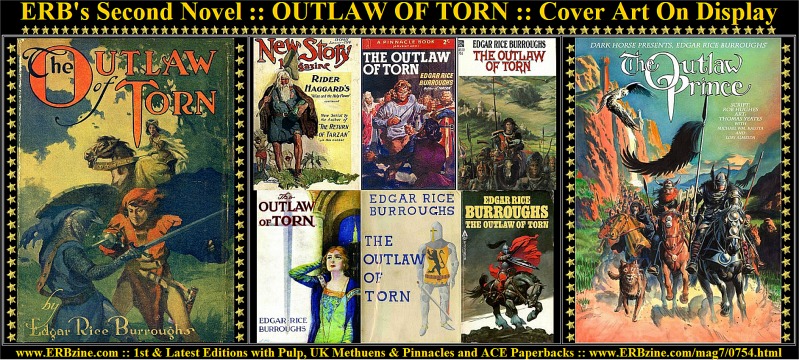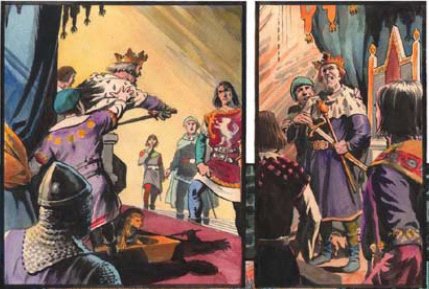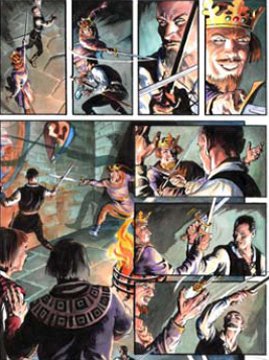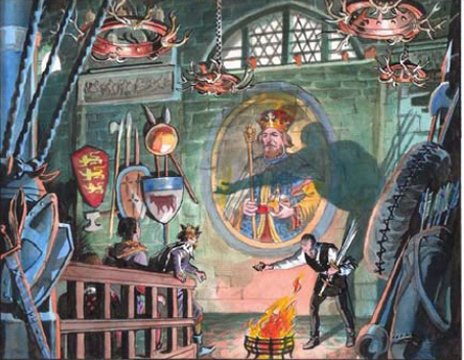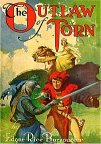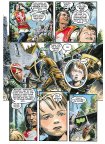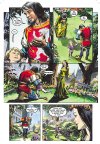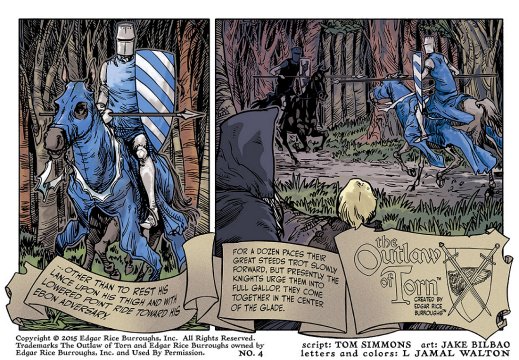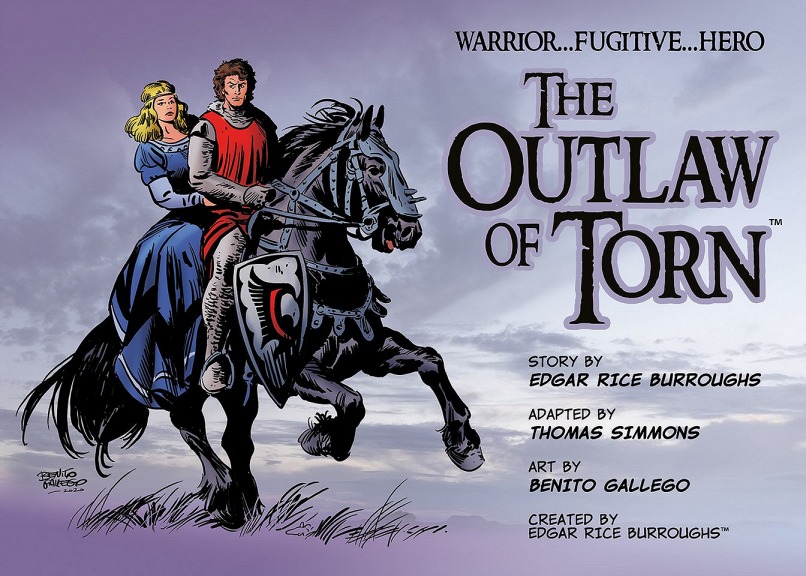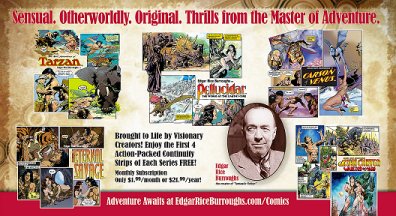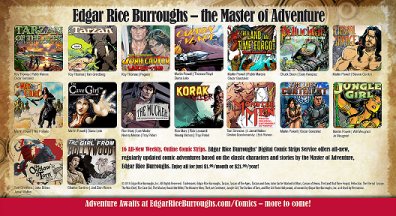ERB's Second Novel: The
Outlaw of Torn
"I think it is the best thing
I ever wrote. . ." ~ Edgar Rice Burroughs
Irwin Porges, through his concentrated research on ERB
documents at ERB, Inc., pieced together the interesting evolution of Ed
Burroughs' second novel - The Outlaw of Torn. Highlights of these
findings follow:
Following ERB's success with his first
story, Under the Moons of Mars, Thomas Metcalf of "All-Story Magazine"
suggested that Ed should consider creating his next story in a different
setting. "I was thinking last night, considering with how much vividness
you described the various fights, whether you might not be able to do a
serial of the regular romantic type, something like, say Ivanhoe,
or at least of the period when everybody wore armor and dashed about rescuing
fair ladies. If you have in mind any serials, or anything of that sort,
and if you think it worth your while, I should be very glad indeed to hear
from you in regard to them.
So, somewhat reluctantly, Ed found himself returning to
the thirteenth century to write a pseudo-historical romance about a gallant
outlaw. Amazingly, he completed the story within three weeks. In his letter
of November 29, 1911, Ed reported the dispatch, by United States Express,
of The Outlaw of Torn.
He explained that the story was set in medieval England.
About his hero, the fictitious second son of Henry III, he wrote, "The
story of his adventurous life, and his love for a daughter of the historic
Simon de Montfort, Earl of Leicester, gives ample opportunity for thrilling
situations, and hair raising encounters. . . while the story hinges,
in a way, upon certain historic facts in connection with The Barons' War
of that period, I have not infused enough history, scenery or weather in
it to in any way detract from the interest of the narrative."
The plot, quite ingenious, and with no actual basis in
fact, concerns the incredible revenge of Sir Jules de Vac, French fencing
master in the household of Henry III, for the insult he has suffered from
the English King. To a critical reader, however, The Outlaw of
Torn was nothing more than a ragged patchwork of assorted characters
and incidents, hastily conceived and ineffectively bundled together. Even
as a picaresque romance with the customary string of loosely related adventures
it was a failure. The semblance of a medieval atmosphere, which Ed attempted
to create through brief descriptions and bits of historical reference,
was completely unconvincing. Metcalf, on December 19, 1911, offered a summary
of the novel's defects:
"I am very doubtful about the story. The plot is excellent,
but I think you worked it out all together too hurriedly. You really didn't
get the effect of the picturesqueness of Torne. Opportunities for color
and pageantry you have entirely missed. The worth of some of the figures
of which you might make a great deal, you do not seem to realize. As, for
instance, the old fencer whom you use for about three chapters and then
ignore entirely until the very end of the story. In him you have a kind
of malevolent spirit who might pervade the whole book."
Ed promptly sent a letter in defence of the rejected
Torn.
His belief had been that All-Story would want something with a good plot
and "as rapid action as possible, so as to not entail too much matter."
He conceded that since this story was completed so soon after his first
one, a reader might receive an impression that it was hurriedly written;
this was clearly not the case, he insisted. "I work all day and late into
the night studying my references and writing alternately. An experienced
writer would doubtless cover much more ground in the same time." He stressed
that the flaws that Metcalfe had pointed out in The Outlaw of
Torn, were "errors" subject to speedy correction. "I can see
no reason why I cannot make the story satisfactory to you, for the errors
you cite are purely of omission, and they can easily be remedied."
Ed's confidence was shaken somewhat when Metcalf responded
with a devastating analysis of the novel. "I think you have neglected great
opportunities." He believed that Ed's first chapter should have been "full
of color and excitement." After a brief summary of the plot, Metcalf referred
to the ending: "I am not sure that there is any particular value in the
happy ending. It seems to be more legitimate to have both De Vac and the
outlaw die in the end, leaving the lady dissolved in tears, possibly on
her way to become a nun." He followed this up with a series of specific
suggestions.
With the rejection of The Outlaw of Torn Ed had
become dubious about his writing ability. As a result, he now had little
faith that "Tarzan," the story that he had started writing after his first
draft of Torn, would be accepted. ". . . When I finished it I
knew that it was not as good a story as The Outlaw of Torn," he
commented, "and that, therefore, it would not sell...."
Metcalf's appraisal of the manuscript evidently convinced
Ed of the necessity for careful, studied revision, for he now worked slowly,
not returning The Outlaw of Torn until February 2, 1912. For
this revised manuscript Ed had devised two separate endings for the story,
"one happy and the other tending toward the opposite, but leaving the matter
somewhat in the reader's hands. For business reasons I lean to the 'happy'
one, because as all classes read fiction purely for relaxation and enjoyment,
I imagine they do not care particularly for stories which leave a bad taste.
However, I leave it to your greater experience."
A month later, Metcalfe sent word that although he liked
the plot, he could not use Torn in its present form. . .but he would
be willing to buy the story for $100 and have one of his staff writers
who was more experienced in medieval history do a re-write as a co-author.
Ed responded:
"I am very sorry that you do not find `The Outlaw of
Torn' available in its present form; but I thank you for your alternative
offer, which, however, in view of the time I have put on the story, I cannot
see my way to accept.. . . I really think your readers would have liked
that story. I am not prone to be prejudiced in favor of my own stuff, in
fact it all sounds like rot to me, but I tried the Mss on some young people;
extremely superior, hypercritical young people, and some of them sat up
all night reading it. [I am convinced] that nobody knows anything about
the manners, customs or speech of 13th century England. . . . So who may
say that one story fairly represents the times and that another does not?
If I had written into The Outlaw of Torn my real conception of the
knights of the time of Henry III you would have taken the Mss with a pair
of tongs and dropped it in the furnace. I made my hero everything that
I thought the men of the time were not.
After another rejection Ed let the Torn project lie dormant
until October when he renewed his efforts: "Am working on The
Outlaw of Torn and think that I am whipping a good story out of it.
Do you really think it worth while submitting it to you or would you suggest
that I fire it to some other magazine?" After Metcalfe's promise to
consider the story again Ed sent the revised script on November 19: "Please
don't return it to me. When you are through with it let me know and I will
send you a shipping paster and the coin to forward it elsewhere. I know
that you will not like it any better than you did before. It's funny too,
for everyone who has read it except yourself has thought it by far the
most interesting story I have written." Following yet another rejection,
Ed responded: "I am going to do it over again when I have time — I shall
stick to The Outlaw of Torn until it is published — I come of a
very long lived family."
There were now three versions: the original long-hand
story of 215 pages; a typed manuscript, quite similar but with small corrections;
and the expanded, detailed form. The revised manuscript of 1912, a collection
of hand-written and typed pages, exhibited changes that were based upon
additional research. Ed's first two openings were discarded, and
in the final published version of The Outlaw of Torn a more leisurely
introductive section appeared. Ed's persistence eventually paid off eight
months later when A. L. Sessions, Editor of the "New Story" magazine, accepted
the story for publication. (The Outlaw of Torn was purchased for
$1000 and serialized in the January, March, April, and May 1914 issues.
WH)
Ed's belief in his beleagured second novel was vindicated
thirteen years later when McClurg published The Outlaw of Torn
on February 19, 1927. To the literary editor of the Sacramento Bee,
on March 15, Ed recalled that this story drove him to the hardest "labor"
he had ever done. He also noted that Bray never cared for the story, but
described him as "one of the princes of the publishing world," and added,
"I dedicated this one to him, as you will note from the flyleaf, to make
him like it." A few months before publication Bray had been made president
of A. C. McClurg & Company. Ed's faith in The Outlaw of Torn
appeared justified with the report, on March 28, that the 5,000 copy first
edition of the book had been sold out — a gratifying record for so short
a period. For the window display of The Outlaw of Torn for Brentano's
Book Store in Chicago, Ed sent a photo of himself at the Tarzana Ranch
with the yearling filly named Dejah Thoris. Concerning the novel, he wrote
to Maurice Simons at McClurg:
"I think it is the best thing I ever wrote, with the
possible exception of Tarzan of the Apes, and next to it, I believe
will rank The War Chief of the Apaches."
Throughout the late thirties Burroughs and ERB, Inc. secretary
Rothmund conducted a persistent campaign to persuade the motion picture
companies to consider various stories as film vehicles. . . . . Those most
determinedly marketed were Jungle Girl, Outlaw of Torn, The
Mucker, Apache Devil, and The War Chief. All of the stories
were judged unsuitable for film production.

